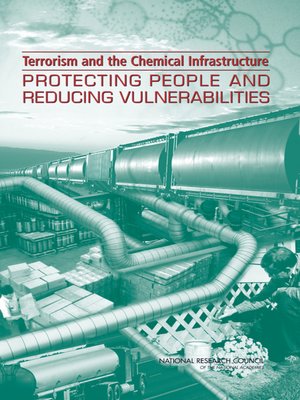Terrorism and the Chemical Infrastructure
ebook ∣ Protecting People and Reducing Vulnerabilities
By National Research Council

Sign up to save your library
With an OverDrive account, you can save your favorite libraries for at-a-glance information about availability. Find out more about OverDrive accounts.
Find this title in Libby, the library reading app by OverDrive.



Search for a digital library with this title
Title found at these libraries:
| Loading... |
<p>The chemical sector is a key part of the national economy and has been designated by the Department of Homeland Security (DHS) as one of 17 sectors comprising the nation's Critical Infrastructure. Although its products represent only 2 percent of the U.S. gross domestic product, those products underpin most other manufactured goods. To assist DHS in characterizing and mitigating the vulnerabilities faced by the nation from the chemical industry, this study examines classes of chemicals and chemical processes that are critical to the nation's security, economy, and health. It identifies vulnerabilities and points of weakness in the supply chain for these chemicals and chemical processes; assesses the likely impact of a significant disruption in the supply chain; identifies actions to help prevent disruption in the supply chain and mitigate loss and injury should such disruption occur; identifies incentives and disincentives to preventative and mitigating actions; and recommends areas of scientific, engineering, and economic research and development. The report concludes that the consequences of a deliberate attack on the chemical infrastructure would be expected to be similar in nature to the accidents we have already experienced. Under limited circumstances, such an attack could cause catastrophic casualties and loss of life, but it would take several simultaneous events to cause catastrophic economic consequences. Poor communication could amplify societal response. Overall, the recommendations in this report emphasize the benefit of investments to improve emergency preparedness for and response to chemical events. They also highlight the potential to minimize the physical hazards through development of cost-effective, safer processes that reduce the volume, toxicity, or hazardous conditions under which chemicals are processed.</p>






